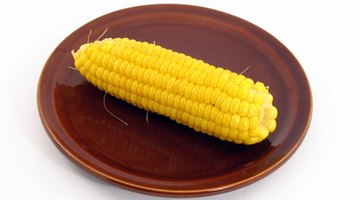DIY: Making Thread Cutting Oil for a Pipe
Making thread-cutting oil for a pipe is not that difficult; people have been doing it for years. Common household materials, which are readily available at any grocery or department store, have been proven to work effectively. In 1921 Mr. Edward K.

Things You Will Need
- Soybean oil
- Corn oil
- Glycerin
- Water
- Lard
- Paint brush
- Wooden craft stick
Hammond researched this area extensively and, even back then, he recommended environmentally-friendly compounds. While these compounds are biodegradable, they are a very efficient lubricant for cutting threads on a pipe. There are two types, water-based and oil-based, and both work equally well.
-
Fill your oil can with corn oil, soybean oil or or a mixture of both. Apply liberally to your thread-cutting die as you are cutting the threads on a pipe. This will work equally well on all thread-cutting operations, such as when you are tapping a thread in a hole.
-
Purchase glycerin in any grocery or department store. Glycerin is found in the feminine hygiene aisle, under the vaginal lubricants section. Dissolve the glycerin in water until it is the consistency of about 30-weight oil. Fill your oil can with the glycerin/water mix. Apply liberally to the threads as you are working the thread-cutting die.
-
Open a can of lard, either vegetable- or animal-based. Apply the lard to the die with a stiff paint brush or a wooden craft stick as you are cutting the threads. Saturate the die/thread area thoroughly, and apply often.
Tip
Always apply liberally; it is better to have too much than not enough. Also, if you wish to reuse the oil, let the shavings settle out in your catch pan, then skim off and filter the oils.
Warning
The glycerin/water mix works best for machine cutting. Since machine cutting heats up the pipe more, the danger of the oil catching fire is present. If you are using oil-based lubricant, run the machine at its slowest speed. Also, keep a fire extinguisher handy in any machine shop, just in case.
References
Tips
- Always apply liberally; it is better to have too much than not enough. Also, if you wish to reuse the oil, let the shavings settle out in your catch pan, then skim off and filter the oils.
Warnings
- The glycerin/water mix works best for machine cutting. Since machine cutting heats up the pipe more, the danger of the oil catching fire is present. If you are using oil-based lubricant, run the machine at its slowest speed. Also, keep a fire extinguisher handy in any machine shop, just in case.
Writer Bio
Tony Oldhand has been technical writing since 1995. He has worked in the skilled trades and diversified into Human Services in 1998, working with the developmentally disabled. He is also heavily involved in auto restoration and in the do-it-yourself sector of craftsman trades. Oldhand has an associate degree in electronics and has studied management at the State University of New York.
Photo Credits
- corn image by dinostock from Fotolia.com
- corn image by dinostock from Fotolia.com
More Articles



